
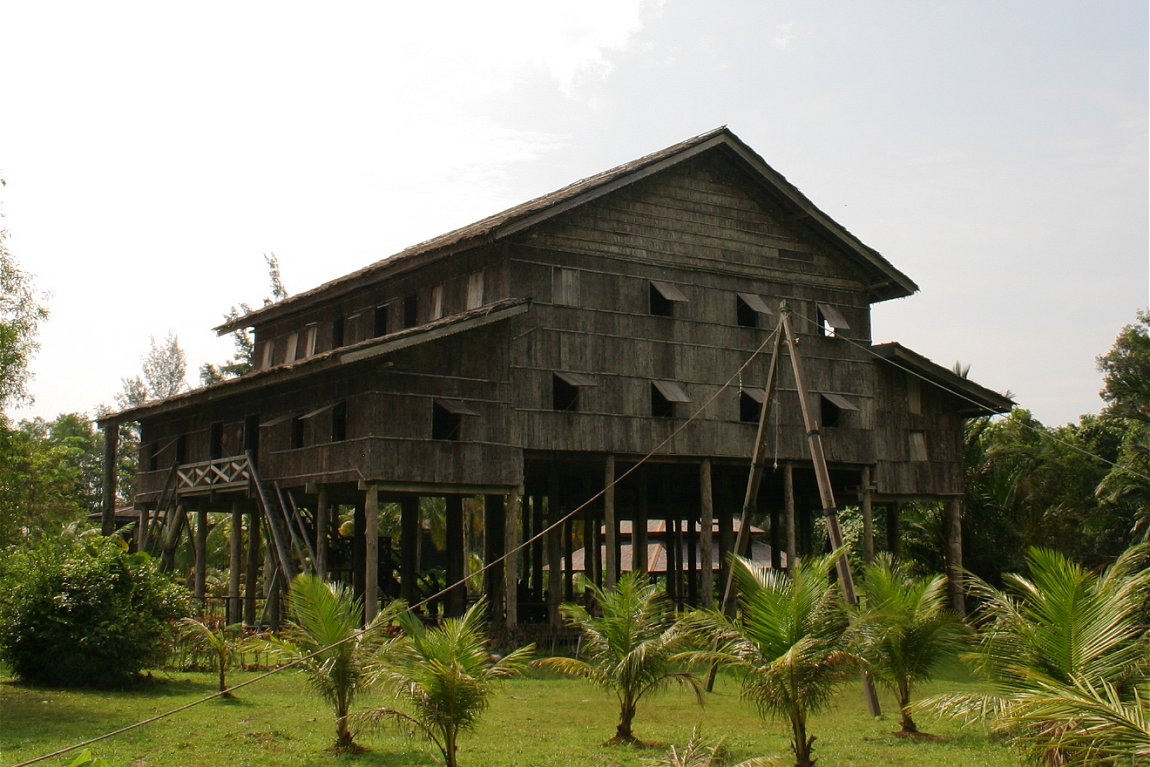 Melanau Tall House at the Sarawak Cultural Village (2 October, 2004)
Melanau Tall House at the Sarawak Cultural Village (2 October, 2004)
The Melanau Tall House (GPS: 1.75076, 110.31703) is a type of longhouse of the Melanau tribe of Sarawak. The Melanau people consists of 5.8% of Sarawak's population. They live mostly in the central coastal region, between the Rajang and Baram rivers. Some of the Melanaus are Muslims, some Christians and the balance still animists. Melanaus are skilled fishermen and boat builders. They are renowned for their massive longhouses, many reaching forty feet high.
The Melanau's staple food is sago, which they prefer over rice. Sago palms originally grow wild, but the Melanaus have cultivated them. The sago is the starch obtained from the pith of the sago palm. To get the sago, the Melanau fell the pall at the right stage of maturity. The wedges of sago pith are rasped into a coarse, wet mash. It is then piled on strong mats and trodden in shallow troughs by the Melanau womenfolk in huts specially built for this purpose. The starch settles in the bottom. Then water is added to it, and the paste is further drained, kneaded, and dried as sago flour. Melanau sago products include dry pellets, grits, and several types of sago biscuits.
Melanau healers or dukun use sick images, figurines that literally represent the illnesses. The Melanau dukun has an elaborate system of ceremonies for curing all kinds of illnesses. The more serious the illness, the more complicated the ceremonies. If all effort fails, he will perform a berayun ceremony, which can last five to nine nights. In such ceremonies, the dukun uses sickness images. The sickness images actually represent the spirit causing the illnesses. The dukun extracts the illness from the patient into the image, which he then sets adrift in the river or hidden in the jungle.
Besides sickness images, the Melanau also carves fetishes for good luck in fishing, effigies of those lost at sea, figurines for ritual burial, and other magical paraphernalia. In the past, they also create massive burial posts, usually for aristocrats. These consists of the Kelirieng (burial pole) and the Salong (burial hut). A kelirieng is made of a huge hardwood tree trunk, elaborately carved from top to bottom. It is hollowed at the top to place the jar containing the chief's bones. A heavy stone slab is surmounted on the top of the pole, the size of which is more than six feet in diameter and can be up to 32 feet tall above the ground.
 Melanau interpretive plaque (2 October, 2004)
Melanau interpretive plaque (2 October, 2004)
 Traditional distribution of the Melanau in Sarawak (2 October, 2004)
Traditional distribution of the Melanau in Sarawak (2 October, 2004)
 Front view of the Melanau Tall House (2 October, 2004)
Front view of the Melanau Tall House (2 October, 2004)
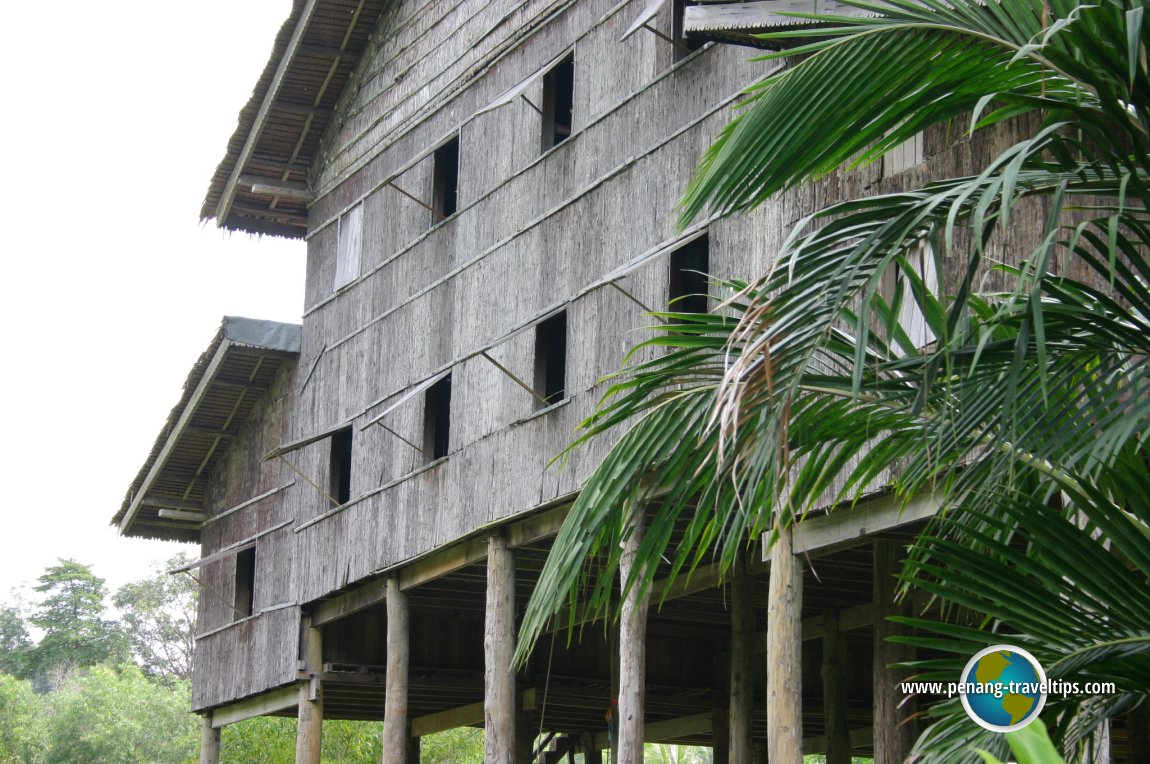 Side view of the Melanau Tall House (2 October, 2004)
Side view of the Melanau Tall House (2 October, 2004)
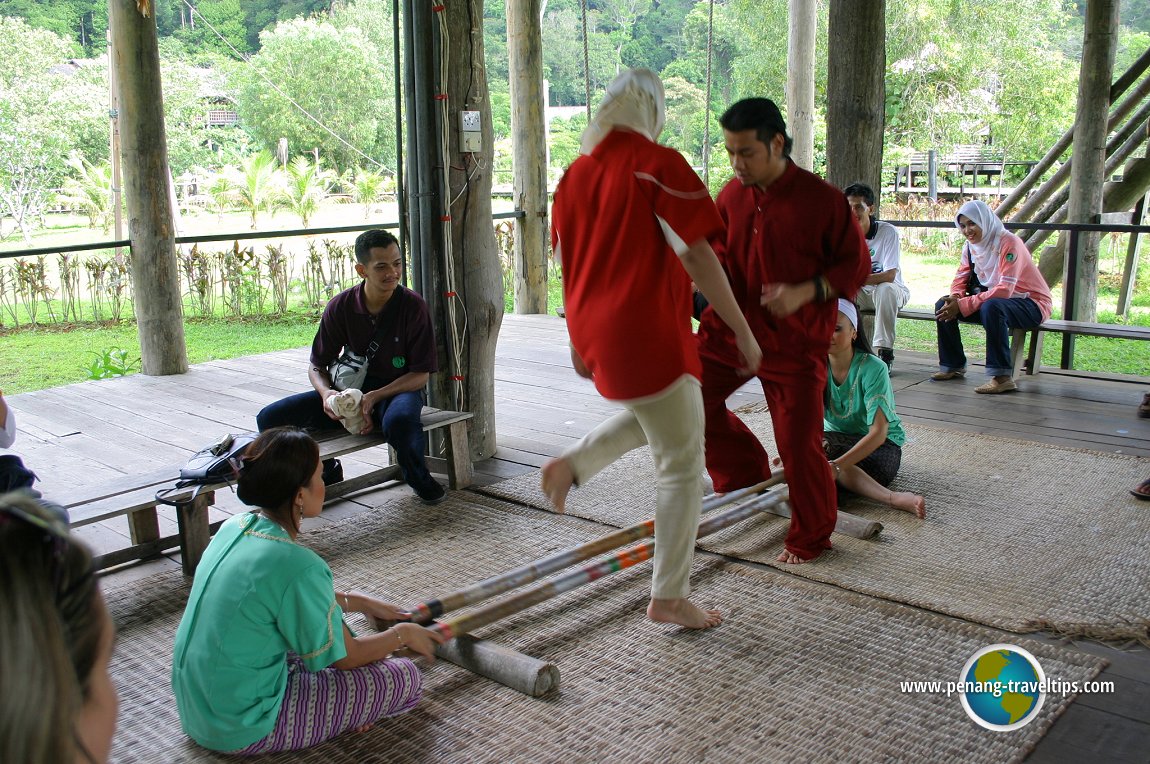 Bamboo dance performance at the Melanau Tall House (2 October, 2004)
Bamboo dance performance at the Melanau Tall House (2 October, 2004)
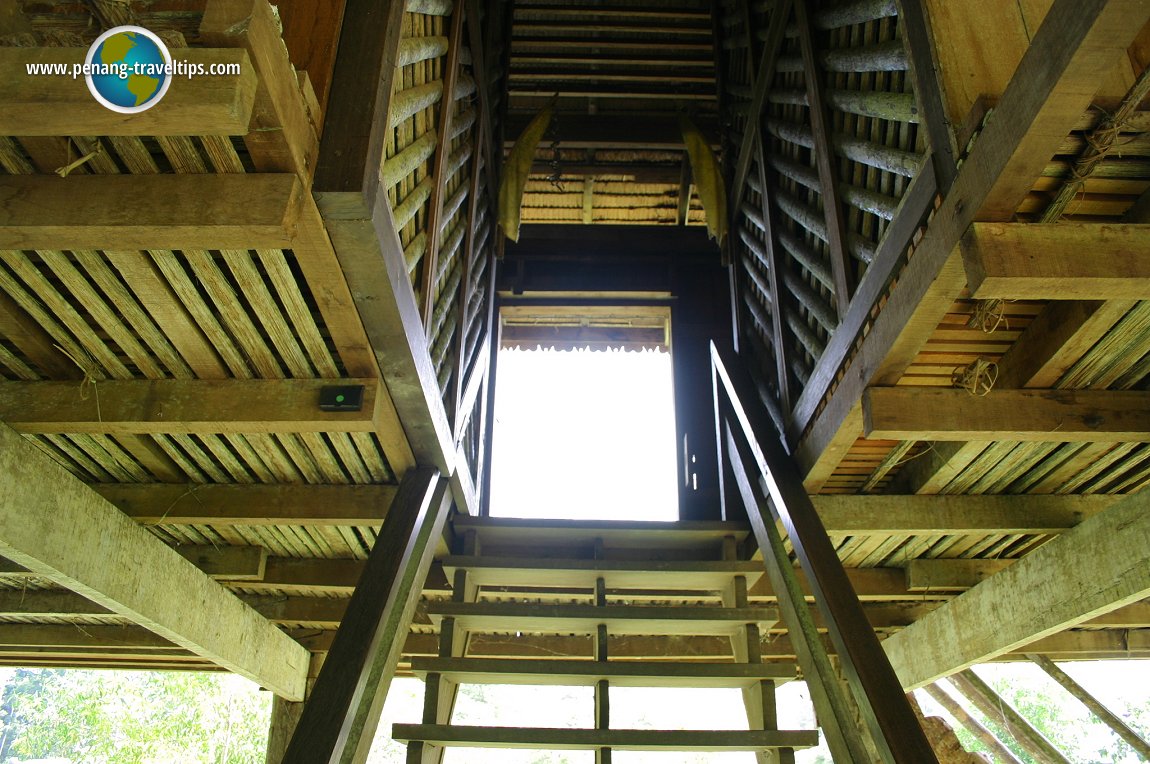 Entering the Melanau Tall House from below (2 October, 2004)
Entering the Melanau Tall House from below (2 October, 2004)
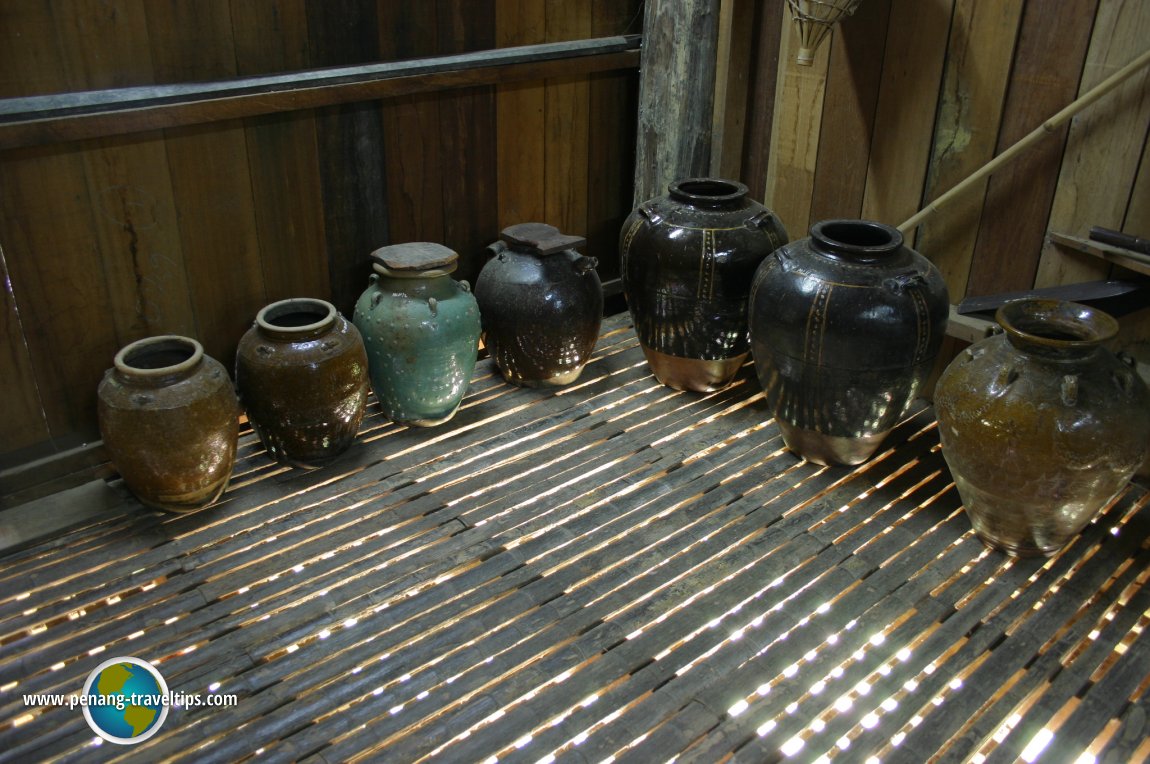 Martaban jars in the Melanau tallhouse (2 October, 2004)
Martaban jars in the Melanau tallhouse (2 October, 2004)
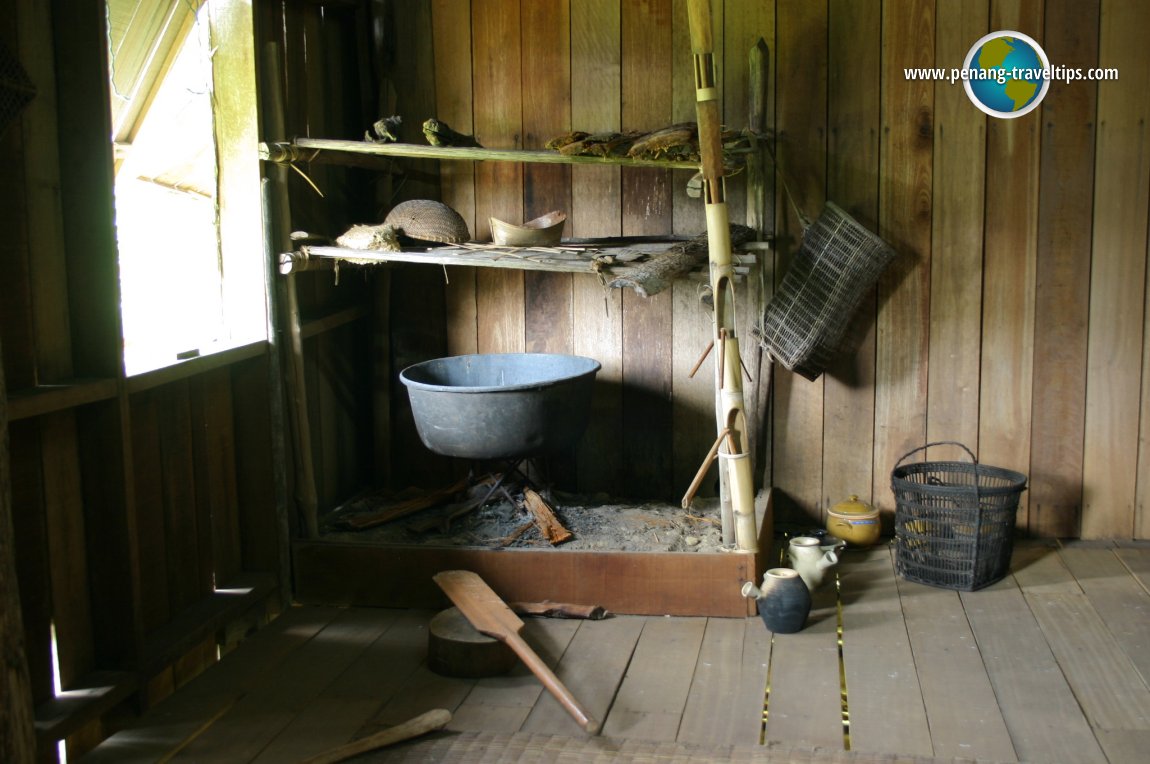 Kitchen in the Melanau tallhouse (2 October, 2004)
Kitchen in the Melanau tallhouse (2 October, 2004)
 View of the martaban jars in the Melanau Tall House (2 October, 2004)
View of the martaban jars in the Melanau Tall House (2 October, 2004)
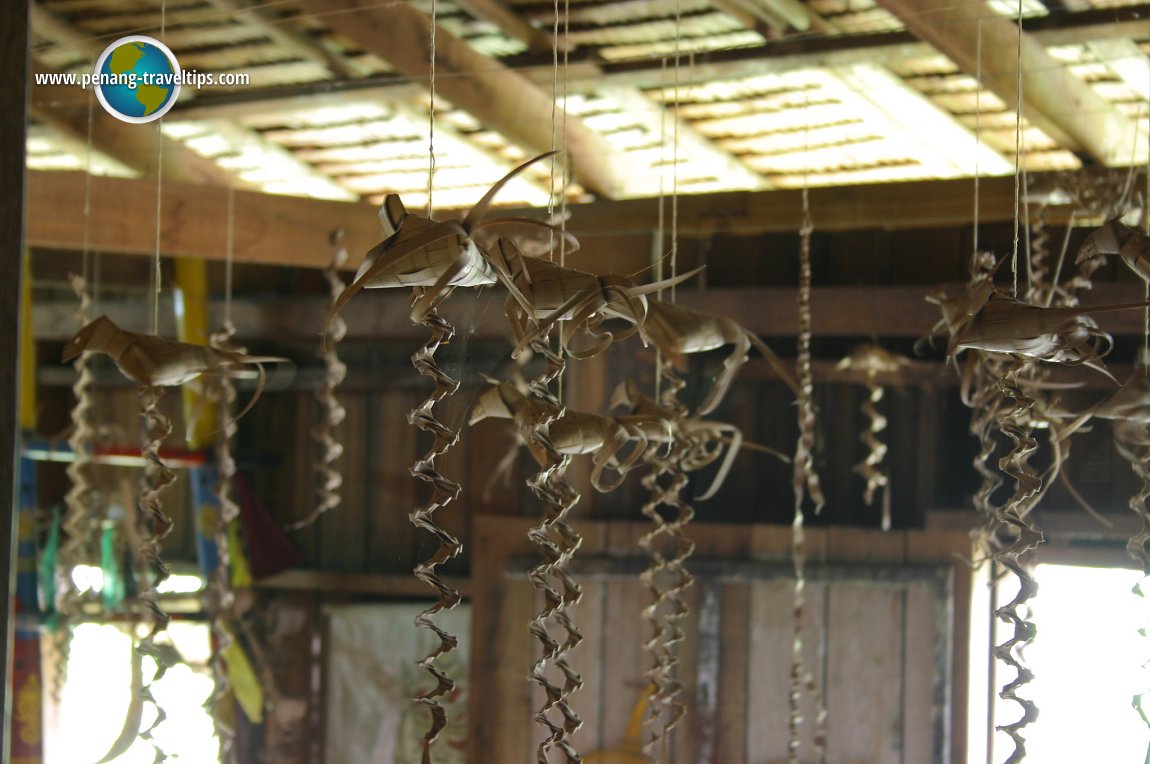 Hanging ornaments in the Melanau Tall House (2 October, 2004)
Hanging ornaments in the Melanau Tall House (2 October, 2004)
 Timothy Tye in the kitchen of the Melanau Tall House (2 October, 2004)
Timothy Tye in the kitchen of the Melanau Tall House (2 October, 2004)
 Timothy Tye with the Martaban jars in the Melanau Tall House (2 October, 2004)
Timothy Tye with the Martaban jars in the Melanau Tall House (2 October, 2004)
 One final view of the Melanau Tall House in the Sarawak Cultural Village (2 October, 2004)
One final view of the Melanau Tall House in the Sarawak Cultural Village (2 October, 2004)
Return to Sarawak Cultural Village main page
DetailsBack to Discover Kuching mainpage
 Latest updates on Penang Travel Tips
Latest updates on Penang Travel Tips
About this website

Dear visitor, thank you so much for reading this page. My name is Timothy Tye and my hobby is to find out about places, write about them and share the information with you on this website. I have been writing this site since 5 January 2003. Originally (from 2003 until 2009, the site was called AsiaExplorers. I changed the name to Penang Travel Tips in 2009, even though I describe more than just Penang but everywhere I go (I often need to tell people that "Penang Travel Tips" is not just information about Penang, but information written in Penang), especially places in Malaysia and Singapore, and in all the years since 2003, I have described over 20,000 places.
While I try my best to provide you information as accurate as I can get it to be, I do apologize for any errors and for outdated information which I am unaware. Nevertheless, I hope that what I have described here will be useful to you.
To get to know me better, do follow me on Facebook!
Copyright © 2003-2025 Timothy Tye. All Rights Reserved.

 Go Back
Go Back